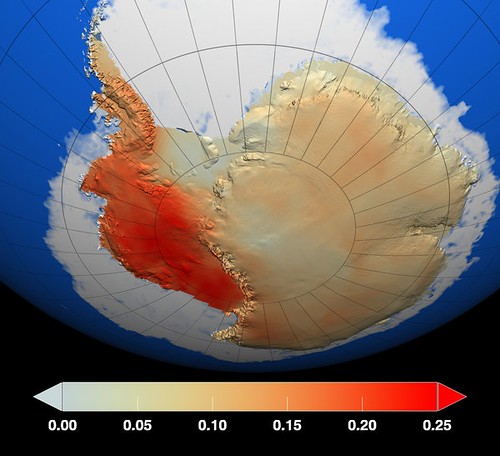
I'm in the rare position of being able to report solid news and still indulge my "I can't be all DOOM all the time mood." Of course, it's all good news from the perspective of Business as Usual, but I'll take good BAU news right now, too.
First, the University of Michigan reported that
Consumer confidence improved in April.
ANN ARBOR-Consumer confidence has rebounded to nearly its highest level since 2007, according to the Thomson Reuters/University of Michigan Surveys of Consumers.
Conducted by the U-M Institute for Social Research since 1946, the surveys monitor consumer attitudes and expectations.
The April level of consumer confidence was just one index-point below the post-recession peak, according to U-M economist Richard Curtin, director of the surveys. The recent gain, he said, was due to much more positive assessment of consumers' current financial situations as well as renewed optimism about the outlook for the national economy during the year ahead.
That's the good news from a nationwide survey. What about here in Michigan? Wayne State University reports good news for this part of the state in
Solid economic growth for region continues according to Southeast Michigan Purchasing Managers Index.
DETROIT - The Southeast Michigan Purchasing Managers Index (PMI) for April is 53.6. Though that's down slightly from 55.0 in March, it is still indicative of an expanding economy. A PMI value above 50 generally suggests economic growth.
"The good news is the economy is continuing to come back," said Tim Butler, associate professor of supply chain management at Wayne State's School of Business Administration, who interpreted this month's results. "That the PMI settled down a bit from March, only demonstrates that the rate of growth is continuing at a steady pace, overall. Another indicator of an expanding economy is the three-month moving average index, which increased from 51.5 to 52.0," Butler said.
Comments from purchasing managers responding to this month's survey ranged from "Companies continue to hoard cash and postpone capital investments and hiring," to "We are beginning to see our customers finally breaking loose and ordering capital equipment."
It's even better where I live, with the University of Michigan reporting
Oakland economy leaving recession in its dust.
ANN ARBOR—Now entering its fifth year of recovery, Oakland County is leaving the 2008-09 recession firmly behind in its rearview mirror.
After bursting out of the recession with more than 65,000 new jobs over the past three years, the Oakland economy will add nearly 43,000 jobs through 2016—11,000 jobs this year, 15,000 next year and 17,000 the year after, say University of Michigan economists. And for the first time since 2003, Oakland's unemployment rate will fall below the national average this year, dropping to 5 percent by 2016.
"We see the continuation of a healthy recovery through 2016, extending its span to seven years, but with the pace of growth moderating a little more this year and accelerating again in the following two years," said economist George Fulton. "Oakland's recovery is supported by an expanding U.S. economy, a recovering local housing sector and increasing vehicle sales, with the Detroit Three fully participating.
"All of this is backed by the county's strong economic fundamentals and forward-looking policy initiatives."
Three years ago, I mocked U of M's forecast for Oakland County in
The Business As Usual people are optimistic about Oakland County. It turns out that the BAU people weren't optimistic
enough. The forecast was for 29,000 jobs over the past three years. The county added more than twice as many. As
I wrote in October, when I recall I last posted good economic news, "This is great news for Business as Usual. Too bad these (still) aren't Business as Usual times." It was still good enough to break out Professor Farnsworth then, so this month's even better news deserves him, too.
Follow over the jump for economic surveys from Florida and Indiana orginally included in the past two Overnight News Digests on Daily Kos, which aren't bad, but aren't as good as the news from Michigan, either.




